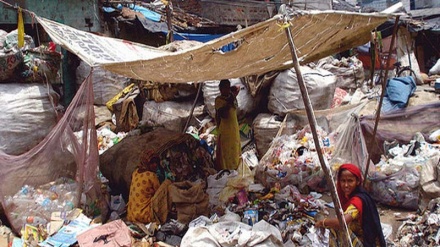We only have one planet to live on (7)
In this episode, we study the environmental impacts of destruction of wetlands.
As a reminder, in the last episode, we spoke of the role of wetlands in the existence of living creatures and in protection of the environment.
It was said that wetlands are commonly viewed as remote wet regions with muddy margins, which are the habitats of instincts and lead to spread of ailments such as Malaria. Hence, wetlands are usually referred to as lagoons and/or swamps. Therefore, based on this definition, transformation of wetlands into farmlands has been the first goal of rural communities and governmental organizations. This trend has continued to this day. Even new concepts such as protection of biodiversity and sustainable development have failed to change such traditional approaches.
Meanwhile, destruction of wetlands doesn’t just take place in developing countries, and within the industrial countries, expansion of agricultural sector has been tied to destruction of wetlands. Hence, destruction of wetlands is a commonalty among developing and developed countries. For instance, the US has lost 87 million hectares of its wetlands as of its era of colonialism to this day, while the existing wetlands in the US are widely exposed to the destructive impacts of industrial development. Although, the rules and regulations in the US monitor the dredging and filling of wetlands; it is seemingly too late to compensate for the lost opportunities. Meanwhile, studies have also shown that even if a wetland is revived, it would not maintain the initial and original characteristic features of a wetland.
Loss of wetland is a sign of an inappropriate lifestyle and management. The destruction of a wetland leads to loss of capacities of a number of lands. This in turn leads to migration, loss of jobs, destruction of agricultural and fishery sectors, loss of sustainable sources of food, and loss of a number of social capacities such as the potentials of the tourism sector. It could also cause a number of respiratory and skin diseases.
If a wetland dries up, it’s surrounding underground water currents also dry up, and when the functions of a wetland are no longer maintained, a tidy sum and a significant amount of time should be allocated for replacement of wetlands. Delay in action, and negligence of warnings lead to further loss of land.
According to experts, an important function of wetland is prevention of sandstorms; because wetlands increase air’s humidity and prevent dust. Meanwhile, the destruction of wetlands leads to spread of dust particles in air. Wetlands maintain a large number of minerals and sediments, which turn into a source of dust particles when wetlands dry up. In fact, dried wetlands set the stage for emergence of sandstorms. Based on the studies which have been carried out by the US National Oceanic and Atmospheric Administration (NOAA), the root cause of mounting sandstorms in the recent years, especially sandstorms in Iran, has been desertification across the eastern region of Iraq. This region is located in the vicinity of Baghdad and between the Rivers Tigris and Euphrates, which was home to countless wetlands in the past. However, the continued droughts which have occurred as of 1990-91, coupled with a fall in rainfall and humidity, and environmental factors such as the division of water currents in the upper hand of River Euphrates, by Syria, construction of a number of dams in different locations of River Tigris by the Iraqi government, and irregular usage of water throughout rivers, lakes, and even wetlands for agricultural purposes have all and all dried up wetlands in this arid land. Moreover, the flora and cane fields of this region have been wiped out as the consequence of consecutive droughts, presence of livestock, and most importantly the repercussions of US-Iraq war. In this manner, the particles left on the bedding of these wetlands have been exposed to powerful storms in Iraq and have become suspended in air, leading to the exposure of Middle Eastern countries to the deadly phenomenon of sandstorms.
Based on the studies which have been carried out by experts, presence of dust particles in Middle East turned into a major problem ever since human interference took place on the bedding of Hour al-Azim wetland. This is one of the permanent wetlands of Iran and Iraq, and the only remaining wetland among the large wetlands of Mesopotamia, located across Iran-Iraq borderline. Mesopotamia wetland is comprised of the three sections of Hour-e Markazi, Hour al-Hamar, and Hour al-Azim. Out of these three wetlands, Hour-e Markazi, and Hour al-Hamar are located in Iraq, while two thirds of Hour al-Azim is situated in Iraq, and one third of it is located in Iran.
The Hour al-Azim Wetland covers an area of 118,000 hectares. This wetland absorbs dust particles, thereby preventing the spread of dust to other regions. Hence, the drying up of this wetland in Iran and Iraq has mounted the possibility of occurrence of sandstorms, coupled with dust particles. In fact, many of the environmentalists believe that the dust particles have been caused due to the destruction of wetlands in Mesopotamia, situated between Iran and Iraq borders. In the past four decades, these wetlands have been destroyed up to 90% and have currently turned into sources of running sand. Moreover, the satellite photos have revealed that the majority of these dust particles have originated from the destruction of wetlands in Mesopotamia.
Although the world public opinion has attributed the destruction of Mesopotamia to the former Iraqi regime in the 1990s; the UN reports show that the Turkish government, upon construction of dams and obstruction of the water currents of Rivers Tigris and Euphrates, has played a major role in destruction of lakes and wetlands in Iraq and Syria. The studies which have been conducted by a number of experts also prove that Mesopotamia wetlands have dried up in recent years due to construction of large dams on Rivers Tigris and Euphrates by Iraq and Turkey, leading to occurrence of brutal sandstorms in the region. The construction of these dams and drainage networks in one of the best wetlands of the world, which was among the most important sources of biodiversity, has turned this region into an arid land. The UN Environmental Plan, in a recent report, has also pointed out that the tragedy of destruction of wetlands in Mesopotamia is marked as one of the worst global environmental disasters and catastrophes.
Meanwhile, the contemporary man should realize and understand this fact that the destruction of a wetland is not just exclusion of the name of that wetland from books. The fact of the matter is that the destruction of a wetland is an irreversible tragedy, which causes the death of thousands of living creatures.


